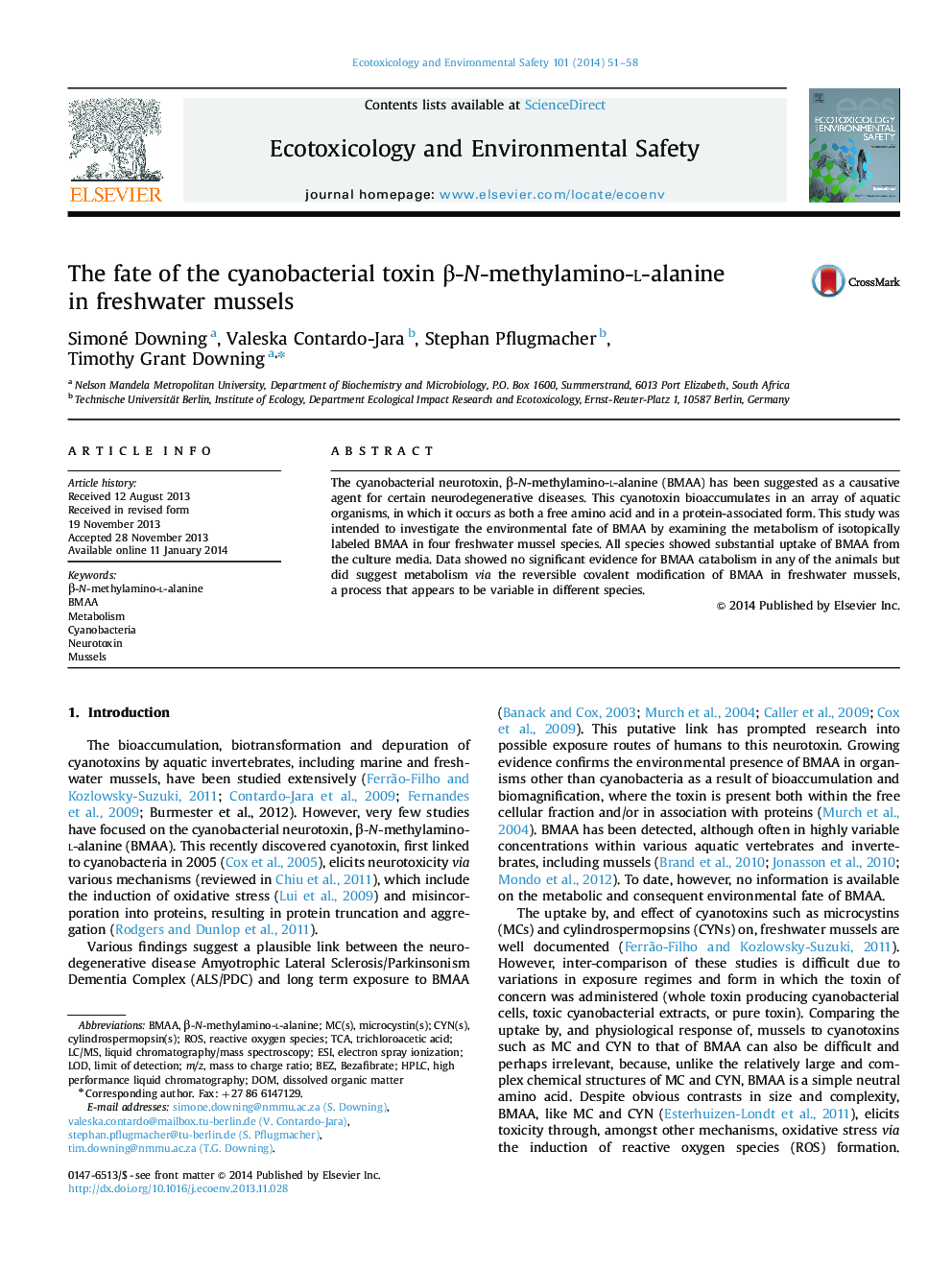| Article ID | Journal | Published Year | Pages | File Type |
|---|---|---|---|---|
| 4420211 | Ecotoxicology and Environmental Safety | 2014 | 8 Pages |
•We investigated the metabolism of the cyanobacterial neurotoxin β-N-methylamino-l-alanine (BMAA) by four freshwater mussel species.•BMAA is not catabolized via proteinogenic amino acid pathways.•BMAA appears to be reversibly covalently modified by the mussel species tested.•This study reveals potential underestimations of the risk of environmental BMAA concentrations.
The cyanobacterial neurotoxin, β-N-methylamino-l-alanine (BMAA) has been suggested as a causative agent for certain neurodegenerative diseases. This cyanotoxin bioaccumulates in an array of aquatic organisms, in which it occurs as both a free amino acid and in a protein-associated form. This study was intended to investigate the environmental fate of BMAA by examining the metabolism of isotopically labeled BMAA in four freshwater mussel species. All species showed substantial uptake of BMAA from the culture media. Data showed no significant evidence for BMAA catabolism in any of the animals but did suggest metabolism via the reversible covalent modification of BMAA in freshwater mussels, a process that appears to be variable in different species.
